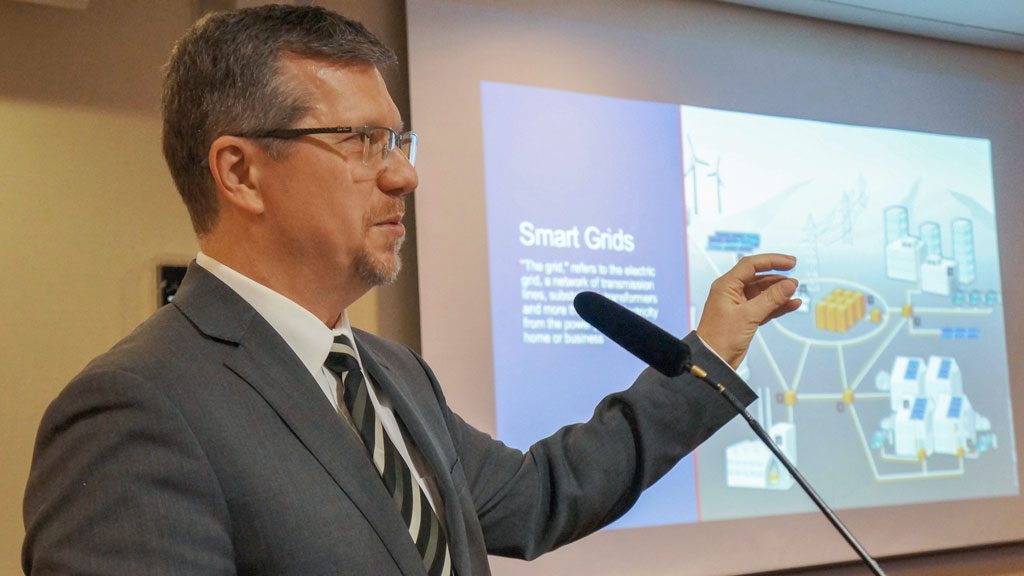Feel like your city is congested with cars and people, stretched to the capacity of its infrastructure? It could get a lot worse.
Global forecasts suggest 2.5 billion people will move to cities in the next 30 years. It is a reason for why government leaders should take smart city technology seriously.
“We need to use the Internet of Things (IoT) to create efficient, sustainable cities…,” Tibor Turi, vice-chair of the Ontario Society of Professional Engineers (OSPE), told a seminar at the 10th International Smart City Expo held in downtown Toronto recently.
While the cost of smart tech is high, “think of it as an investment because in the long-term there is a payback. There are social and financial benefits,” he said.
Turi, who defines a smart city as one that uses electronic data collection to supply information to manage assets and resources efficiently, said the IoT can connect and integrate a city’s energy, public services, water and roads infrastructure, plus its buildings.
“A lot of what we are aiming for with these technologies is a more sustainable world.”
Turi said that engineers are key players in smart cities, helping to calculate costs and benefits plus public safety, sustainability and the integration of projects.
Taking on one smart sector at a time is a sensible approach to development. A case in point is in North Bay, where the city “is starting to instrument” its drinking water system to monitor usage, he told the seminar. “It’s a beautiful little project that can unfold into other areas.”
Turi said it is important to cultivate public-private collaborations and provide a clear understanding to city residents about smart plans.
One area to start might be with traditional street light networks — energy hogs that are costly to maintain. Wireless smart technology can save up to 50 percent on operations costs. Straightforward to install, it is also easy to maintain through real-time health status monitoring.
Another smart priority area is water and wastewater infrastructure, he said, noting that most systems in Ontario are ripe for upgrades to meet growing populations and the impact of climate change.
“Smarter water” results in an infrastructure that is “effectively managed” through “meaningful and actionable data on the flow, pressure and distribution of water. It is critical that consumption and forecasting of water used is accurate.”
Turi said pumping water — the biggest use of energy in a city — can be “smartly pumped” in off-peak hours, at nighttime for example when costs are low. When power is managed effectively through smart city concepts, “you won’t have to build another power plant” as the city grows.
The technology behind smart is 5G — an advanced wireless system that is 1,000 times faster than 4G. It is what will enable things such as a network of self-driving vehicles, he said.
Toronto could accommodate 40 percent more people on its roads through smart technology. That scenario paints a picture of a city free of traffic lights with self-driving vehicles weaving around each other without slowing down, Turi told the seminar.
What’s more, a person’s automated car could take them to work and then drive away to pick up other people for fares. “It blows apart the idea of a vehicle as a depreciating asset.”
He said in a smart world health care will be IoT enabled…even garbage cans will be smart and traditional ways of doing business will be disrupted.
Among the hurdles cities face include changing regulatory environments affecting smart public services, municipal budget limitations and the scarcity of skilled workers to provide smart servicing.
Implementing a cyber security plan is essential, Turi added.
He said to get out the starting gate, municipalities need to break down stakeholder silos. One way is to host information exchange events that bring key players into the same room.











Recent Comments
comments for this post are closed